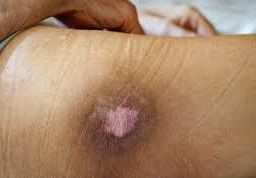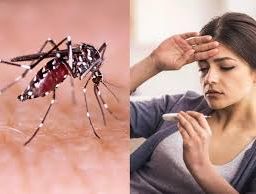
Marijuana Benefits for HIV: How Marijuana Can Help Manage Symptoms of HIV and AIDS
Marijuana, a versatile plant, has garnered attention for its myriad health benefits, especially in the realm of HIV care. As research unfolds, the potential of cannabis in alleviating symptoms and enhancing quality of life for those affected by HIV becomes increasingly evident.

Marijuana, also known as cannabis, has been a topic of extensive research and discussion in recent years due to its potential health benefits. It’s not only gained popularity for its recreational use but has also emerged as a potential natural remedy for various health conditions. While it remains a subject of debate, there is growing evidence supporting its use for various medical conditions. In this post, we embark on a journey to explore the connection between cannabis and HIV, unveiling the promising ways in which this enigmatic plant may offer relief and hope to those affected by the virus.
Understanding Marijuana:
Marijuana is a plant that contains more than 100 chemical compounds known as cannabinoids. Among these, two compounds have gained considerable attention for their potential health benefits: tetrahydrocannabinol (THC) and cannabidiol (CBD). THC is the psychoactive compound responsible for the “high” associated with marijuana, while CBD offers various therapeutic properties without the psychoactive effects.
1. Pain Management
One of the most well-documented health benefits of marijuana is its ability to alleviate chronic pain. The THC and CBD compounds found in marijuana interact with the endocannabinoid system in the human body, reducing pain perception and providing relief for conditions such as arthritis, multiple sclerosis, and chronic pain. For many living with HIV, chronic pain is a daily struggle. Cannabis, with its pain-relieving properties, provides an avenue for relief.
2. Anxiety and Depression
Another potential health benefit of marijuana is its use in managing anxiety and depression. The emotional toll of living with HIV is significant. Some studies suggest that certain strains of cannabis, particularly those high in CBD, may help reduce symptoms of anxiety and depression promoting mental well-being. However, it’s important to note that the effects can vary from person to person, and excessive use may have adverse effects.
3. Nausea and Vomiting
Cannabis has long been used to combat nausea and vomiting, particularly in patients undergoing chemotherapy. The side effects of HIV medications can often lead to nausea and vomiting. Cannabis’s antiemetic properties may offer comfort and enhance the quality of life for those battling the virus as well as managing the side effects of cancer treatments and improving the quality of life for cancer patients.

4. Appetite Stimulation
Marijuana is famous for inducing the “munchies.” This appetite-stimulating effect can be beneficial for patients with eating disorders or those who have lost their appetite due to illness. Loss of appetite and weight loss are common challenges among HIV patients. THC triggers the release of hunger hormones, helping patients maintain a healthy weight. It can help them regain their nutritional balance and strength.
5. Epilepsy and Seizure Disorders
CBD, a non-psychoactive compound in marijuana, has shown promise in reducing the frequency and intensity of seizures in individuals with epilepsy. Epidiolex, a prescription medication containing pure CBD, is approved by the FDA for the treatment of certain forms of epilepsy.
6. Inflammation and Autoimmune Diseases
Cannabinoids have anti-inflammatory properties, which can be advantageous for individuals with autoimmune diseases like multiple sclerosis, Crohn’s disease, and rheumatoid arthritis. By reducing inflammation, marijuana can help manage symptoms and improve the overall quality of life.
7. Glaucoma
Glaucoma is a condition characterized by increased intraocular pressure, which can lead to optic nerve damage and vision loss. Some studies suggest that marijuana can help lower intraocular pressure, potentially slowing the progression of the disease. However, its effects are short-lived, and it may not be a primary treatment for glaucoma.
8. Neurological Disorders
Research into the potential use of marijuana in managing neurological disorders, such as Parkinson’s disease and Alzheimer’s disease, is ongoing. While there is still much to learn, cannabinoids may hold promise in alleviating some symptoms and improving patients’ cognitive function. It can also protect brain cells and reduce inflammation.
9. Sleep Aid
Individuals struggling with sleep disorders, such as insomnia, may find relief with marijuana. Some strains are known for their sedative properties, which can improve sleep quality and duration.

Cannabis is available in various forms and products, depending on the legal regulations in your location and your intended use. Here are some common forms of cannabis:
1. Flower: Dried cannabis flower is the most traditional and widely recognized form. It can be smoked in joints, pipes, or bongs, or vaporized for inhalation.
2. Edibles: Cannabis-infused edibles include a wide range of products like cookies, gummies, chocolates, and beverages. These offer an alternative to smoking and are known for providing a longer lasting, but delayed, effect.
3. Concentrates: Concentrated forms of cannabis include oils, waxes, shatter, and tinctures. These are often used in vaporizers or can be added to food and beverages. They are potent and should be used with caution.
4. Topicals: Cannabis-infused creams, lotions, and balms are used topically for localized relief, such as pain or skin conditions, without any psychoactive effects.
5. Capsules and Pills: Pre-measured cannabis capsules or pills are often used for precise dosing and can be a discreet way to consume cannabis.
6. Transdermal Patches: These patches are applied to the skin and slowly release cannabinoids into the bloodstream over time.
7. Suppositories: Less common but available, suppositories are inserted rectally or vaginally for localized relief.
8. Raw Cannabis: Some individuals juice raw cannabis leaves or add them to smoothies for their potential health benefits.

It’s important to note that the availability of these forms can vary significantly depending on the legal status of cannabis in your region. In areas where cannabis is illegal, its availability is limited to the black market. In places where it’s legal, there are usually licensed dispensaries or online platforms where you can purchase cannabis products. Always adhere to local laws and regulations when obtaining and using cannabis.
The health benefits of marijuana are undeniable, and its potential therapeutic applications are expanding as research progresses. However, it’s essential to note that marijuana use should be approached with caution, and in some cases, under medical supervision. The legality of marijuana varies by region, so it’s crucial to be informed about the laws in your area. Before incorporating marijuana into your health regimen, consult with a medical professional to determine its suitability and to discuss the most appropriate strains, dosages, and delivery methods. As our understanding of marijuana’s health benefits continues to evolve, it remains a topic of great interest in the medical community and among those seeking alternative treatments for various conditions.
If you’re considering using marijuana for its health benefits, consult with a healthcare professional to determine the best approach for your specific condition. The potential benefits are vast, but responsible and informed use is key to maximizing the advantages while minimizing any potential risks.
The information provided in this content is for general informational purposes only. It is not intended as medical or healthcare advice, diagnosis, or treatment. Always seek the advice of a qualified healthcare professional with any questions you may have regarding a medical condition or healthcare decisions.















